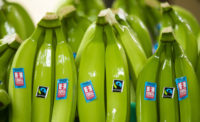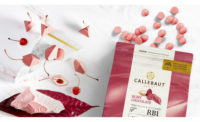Chocolate consumption rates among U.S. adults are up 7 percent from a decade ago but have slipped in recent years, according to data in a new report by market research firm Packaged Facts.
Citing data from Simmons Research, Packaged Facts said in the 12th edition of “Chocolate Candy: U.S. Market Trends and Opportunities” 81.7 percent of adults are expected to eat chocolate in 2018, up from 74.2 in 2008. However, this year’s expected consumption rate is down from 82.1 percent in 2017 and 82.6 percent in 2016.
Individual, regular-sized bars remain the favorite among U.S. adults, with 43.2 percent saying they consume that format the most. Nonetheless, that’s down 1.7 percent from 2017 and 2.1 percent from 2008.
Consumption of fun-sized packages has grown to 24.1 percent in 2018 from 17.7 percent in 2008. The consumption rate for miniatures packages has hovered around 19 percent over the last decade.
King-sized bars have seen a resurgence over the last two years, with consumption rates of 8 percent in 2017 and 7.8 percent in 2018. That’s up from 5.9 percent in 2008.
Simmons also reported that nearly 52.7 percent of U.S. adults are expected to consume 10 or more servings of chocolate or candy in a month in 2018, down from 53.6 in 2017. Consumption by U.S. adults expected to consume 3-4 servings of confectionery products in a month has hovered between 8.5-9 percent over the last decade.
While consumers will continue to indulge, concerns over sugar intake, greater interest in healthier snacking options and shifts in checkout line configurations may contribute to the declines.
“The market is mature and challenges face the industry,” the report’s executive summary reads. “These include cross-currents in ongoing consumer demand for indulgent treats, offset by trend toward healthier eating and snacking, and the growing negative image of sugar and its impact on rising diabetes rates and concerns with childhood obesity.”
Packaged Facts also noted product innovation and confectionery’s status as an affordable treat can help buoy sales, which are expected to hit $23 billion in 2018.
“The chocolate market is indisputably dynamic, moreover, with strong pace of innovation, an influx of creative new flavors, and a steady flow of new products that engage diverse groups of consumers,” the executive summary reads. “On the positive side, there remains consumer devotion to confectionery products and the role of chocolate candy in particular as an accessible luxury, creating many opportunities to trade the consumer up to premium products.”








